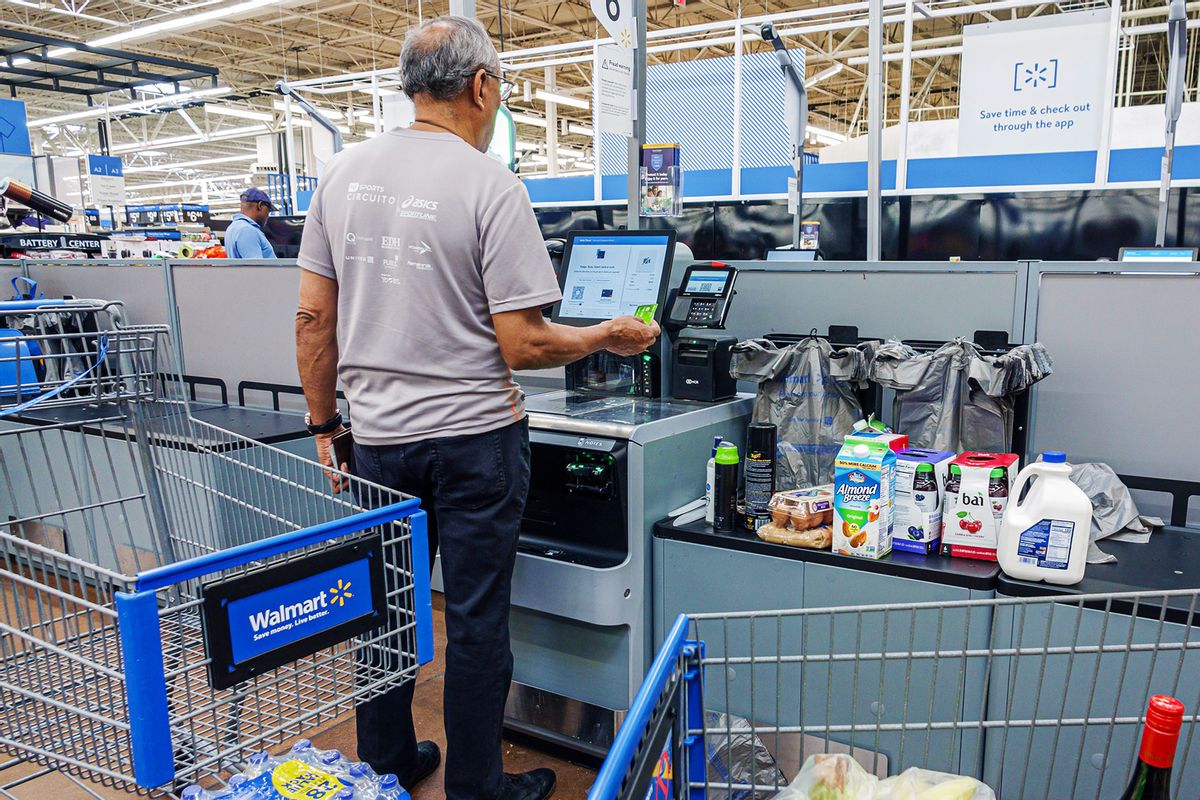Back in July, a survey conducted exclusively for Newsweek found that a majority of Americans wanted self-checkout kiosks to be completely removed from retail stores. The poll noted that 62% of shoppers disliked self-checkout technology because it takes away the job of an actual store cashier. Forty percent of shoppers said they were against self-checkouts because they prefer speaking to someone. And 27% of respondents said they don’t like the technology because it doesn’t accept cash.
The overwhelming sentiment customers had towards self-service technology was distrust. Since its inception, self-service kiosks — an interactive touchscreen device that allows customers to purchase services sans any interactions with a store employee — have been vilified for taking away labor opportunities and reducing labor costs. However, according to a new report from CNN, kiosks have shown “the unintended consequences of technology in fast-food and retail settings,” which surprised consumers, fast-food employees and analysts alike.
As explained by Nathaniel Meyersohn, self-service kiosks have largely shifted cashiers to other tasks that “help increase sales, easily adjust prices and speed up service.” For example, several McDonald’s franchisees are implementing kiosks that can take cash and accept change. Those franchisees are also transferring their cashiers to other roles, like new “guest experience lead” jobs that help customers use the kiosks.
At Shake Shack, self-service kiosks help “guarantee that the upsell opportunities” like a milkshake or fries — popular menu options — are suggested to customers upon ordering. “Sometimes that is not always a priority for employees when you’ve got 40 people in line. You’re trying to get through it as quick as possible,” Shake Shack CEO Robert Lynch said during an earnings call last month. He added that cashiers are not stripped of their jobs but instead, reassigned to maintain the dining area, deliver food to customers or work in the kitchen.
“In theory, kiosks should help save on labor, but in reality, restaurants have added complexity due to mobile ordering and delivery, and the labor saved from kiosks is often reallocated for these efforts,” RJ Hottovy, an analyst who covers the restaurant and retail industries at Placer.ai, told CNN.
In recent years, self-service kiosks have been “threatened as a fast-food industry response to higher minimum wage laws,” Meyersohn wrote. Former McDonald’s CEO Ed Rensi said in a 2016 Forbes op-ed that the fight for a $15 minimum wage “has negatively impacted the career prospects of employees who were just getting started in the workforce while extinguishing the businesses that employed them.”
“I and others warned that union demands for a much higher minimum wage would force businesses with small profit margins to replace full-service employees with costly investments in self-service alternatives,” he added.
California’s $20 minimum wage mandate officially went into effect this year following a months-long battle between state lawmakers, labor unions and franchisees regarding a wage increase. Under AB 1228, fast-food workers are given a 25% hourly raise, which increases the previous $16 per hour rate by $4. The state’s newly created Fast Food Council can also hike up the minimum wage by up to 3.5% yearly, depending on inflation.
Following California’s minimum-wage mandate, state lawmakers have proposed a bill that would require many grocery chains and drug retail stores to have staff members work their self-checkout kiosks. Senate Bill 1446, which is part of a bill package introduced by state Sen. Lola Smallwood-Cuevas in February, would also require retailers to complete a worker and consumer impact assessment before introducing self-checkout technologies, including artificial intelligence.
Want more great food writing and recipes? Subscribe to Salon Food's newsletter, The Bite.
The bill comes amid growing concerns about “shrinkage” — defined as missing inventory from theft and broken items, per USA Today. According to testimony from Smallwood-Cuevas in a hearing earlier this year, the bill aims to combat retail theft, increase employment opportunities and protect workers and shoppers.
As noted by CNN, self-checkout has not caused retail job losses. Indeed, the technology has some faults. They can cause long lines and prolong order deliveries due to consumers not knowing how to use self-checkout devices. They can break down. And, they can lead to “higher merchandise losses from customer errors,” Meyersohn added. What they haven't caused, though, are fewer job opportunities.
Within the quick-service and fast-casual segments of the restaurant industry, staffing levels were nearly 150,000 jobs (or 3%) above pre-pandemic levels, according to statistics from the Bureau of Labor Statistics.



Shares